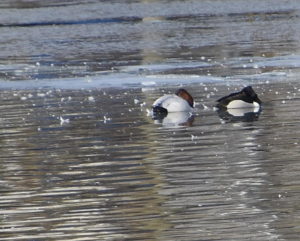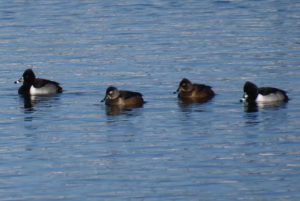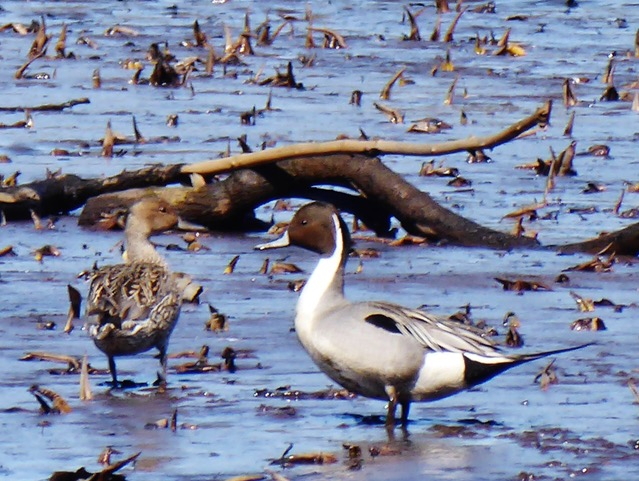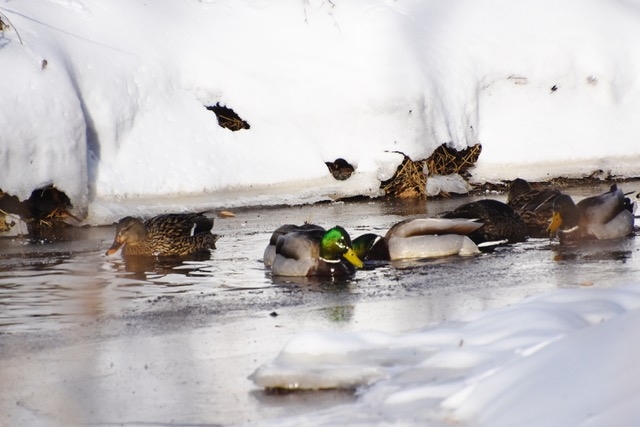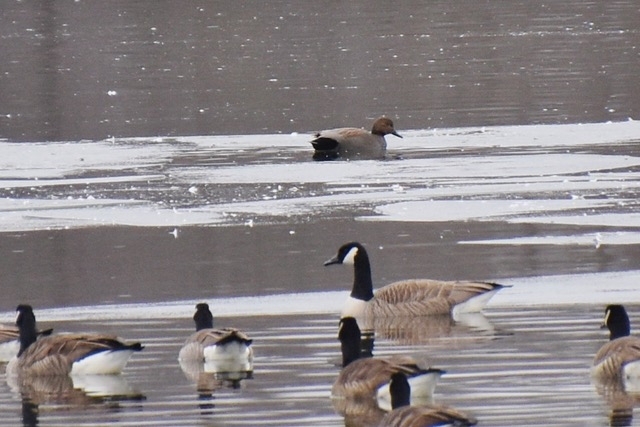Another Winter visitor to our area is a diving duck called a Ring-necked Duck. Unlike the fish eating Mergansers the Ring-necked is largely a vegetarian feasting on aquatic plants although it will eat insects and molluscs. Its name is a poor choice because it is almost impossible to see the brown ring at the base of its neck. However, the rings on its bill are very obvious. A key field mark for the male is bright, white “spur” on the front flank that borders the very dark chest area.
Canvasback duck resembles Ring-necked Duck but its head (often tucked in) is deep red rather than purplish-black. It has an all-white back and it does not show the “spur” field mark. Both ducks are scarce visitors to our area.
Probably our most familiar duck is the Mallard. The Mallard is one of the most widely spread ducks in the Northern Hemisphere and can be seen here throughout the year. The Mallard belongs to a group known as Dabbling Ducks. These ducks feed on aquatic vegetation by dipping or dabbing their bills under the water or very commonly tipping forward putting their butts up in the air. Three of this group visit us in winter. They are the Northern Pintail, Green-winged Teal and a less common visitor called a Gadwall. A fourth member, the American Black Duck, is more common in the salt marshes during winter but is also seen in small numbers in our area.


